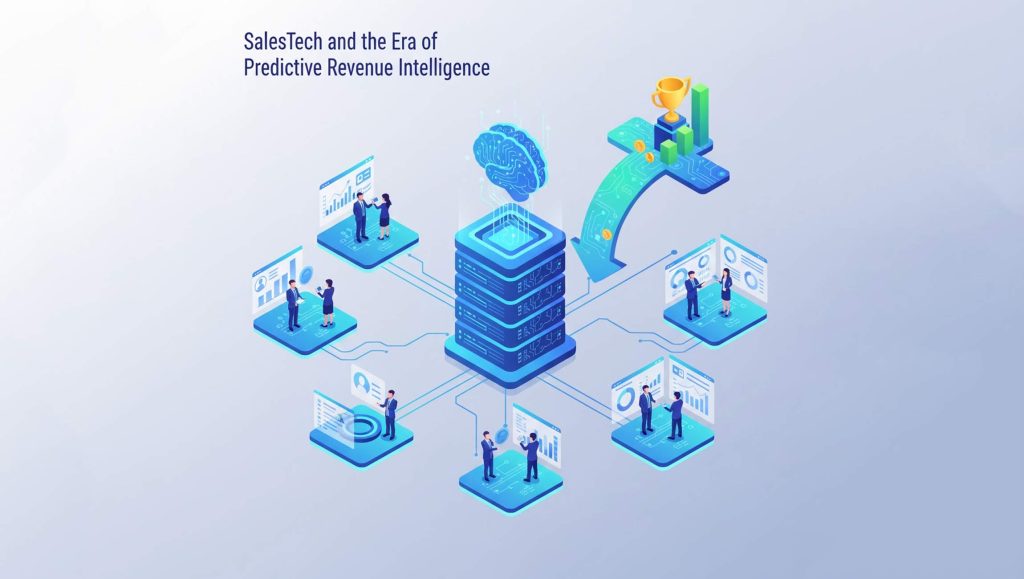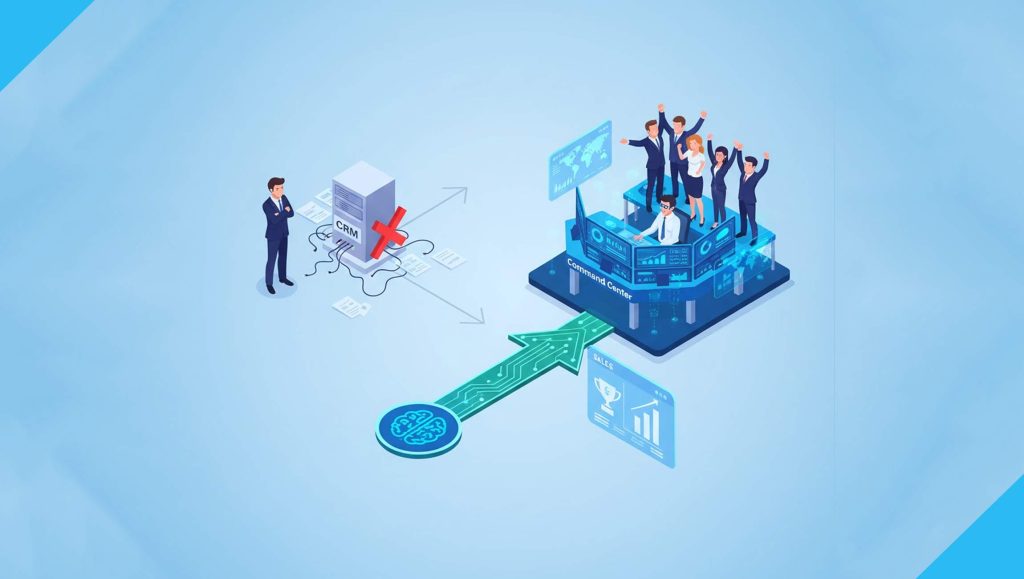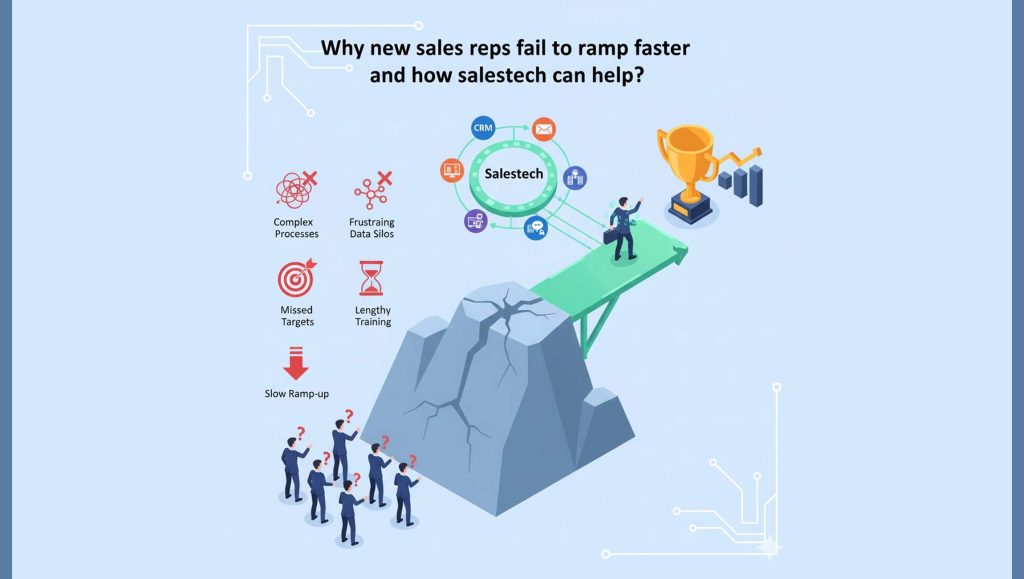In the current digital landscape, integrating SalesTechnology (SalesTech) with marketing technology (MarTech) is critical for creating a seamless customer journey. As businesses strive to meet the ever-evolving expectations of their customers, the synergy between these two technological spheres can significantly enhance customer experience, streamline processes, and drive revenue growth. This blog explores the essentials of integrating SalesTech with MarTech and the benefits it brings to businesses.
Understanding SalesTech and MarTech
SalesTech encompasses a variety of tools and platforms designed to assist sales teams in managing leads, closing deals, and maintaining customer relationships. Key components include Customer Relationship Management (CRM) systems, sales automation tools, and communication platforms. These tools help sales teams track customer interactions, forecast sales and streamline their workflows.
MarTech, on the other hand, refers to the technologies used by marketing teams to plan, execute, and measure marketing campaigns. It includes email marketing platforms, social media management tools, Content Management Systems (CMS), and analytics software. MarTech enables marketers to reach their target audience, personalize messaging, and analyze campaign performance.
Why the Integration of SalesTech and MarTech Matters?
Integration of SalesTech and MarTech is essential for several reasons:
- Ensures a consistent and cohesive customer experience: When sales and marketing teams operate in silos, there is a risk of fragmented communication and misaligned strategies. Integrated systems enable seamless information flow, allowing both teams to work with the same data and insights.
- Integration enhances data accuracy and accessibility: By consolidating customer data from various touchpoints, businesses can create a unified view of their customers. This comprehensive view enables better choices and customized exchanges.
- Improve efficiency by automating repetitive tasks: Sales and marketing groups can concentrate on key tasks like cultivating potential customers and finalizing transactions instead of getting overwhelmed with paperwork and administrative duties.
Read more: Customer Education Programs: Measure Effectiveness, Maximize ROI
Key Benefits of Integration
Here are some of the most important benefits of a unified tech stack:
· Enhanced Customer Insights
Unified systems offer a complete understanding of customer habits and likes. By merging information from promotional campaigns, website engagements, and sales operations, companies can understand their customers’ desires and drives more deeply. This understanding allows for more focused and successful marketing strategies, ultimately resulting in improved conversion rates and customer happiness.
· Improved Lead Management
A unified tech stack streamlines the lead management process. Marketing teams can seamlessly pass qualified leads to sales teams, ensuring that no opportunities are missed. Sales teams, in turn, can access valuable marketing data, such as lead source and engagement history, to tailor their approach and increase the chances of closing deals.
· Personalized Customer Experience
Integration allows companies to offer personalized experiences at all points of contact. By using customer information, businesses can craft customized marketing communications, suggest appropriate products or services, and provide prompt follow-ups. Personalization strengthens customer bonds and enhances loyalty.
· Increased Efficiency and Productivity
Automation is a significant advantage of merging SalesTech with MarTech. Regular tasks, such as data input, lead grading, and follow-up alerts, can be automated, freeing up precious time for sales and marketing teams. This improved productivity allows teams to concentrate on high-value tasks, such as fostering relationships and generating income.
· Better Performance Measurement
With integrated systems, businesses can track the performance of their sales and marketing efforts in real-time. Analytics and reporting tools offer useful insights into campaign effectiveness, lead conversion rates, and revenue generation. These insights enable continuous optimization and better allocation of resources.
How to Integrate SalesTech and MarTech Effectively?
Seamless integration of SalesTech and MarTech requires you to follow the following steps:
- Assess Your Current Tech Stack: Start by evaluating your existing sales and marketing technologies. Identify any gaps or redundancies and determine which tools are essential for your business objectives. This assessment will help you decide which systems to integrate and which to replace or upgrade.
- Choose the Right Integration Platform: Select an integration platform that can seamlessly connect your SalesTech and MarTech tools. Look for solutions that offer pre-built connectors, user-friendly interfaces, and robust support. Popular integration platforms include Zapier, MuleSoft, and Workato.
- Align Your Teams: Ensure that both sales and marketing teams are aligned on the goals and processes of the integration. Promote teamwork and dialogue among the groups to guarantee a seamless changeover.
- Prioritize Data Quality: Data quality is crucial for successful integration. Make sure your client information is precise, comprehensive, and current. Implement data governance practices, such as regular data audits and cleansing, to maintain data integrity.
- Test and Optimize: Once the integration is in place, conduct thorough testing to ensure that data flows smoothly between systems and that all functionalities work as expected. Track efficiency and collect user feedback to pinpoint areas that need enhancement.
Read more: The Future of Sales Coaching: Harnessing AI to Transform Sales Teams
Conclusion
Integrating SalesTech with MarTech is a strategic move that can significantly enhance customer experiences and drive business growth. By eliminating barriers and facilitating smooth cooperation between sales and marketing groups, companies can establish a consistent customer experience that satisfies the needs of modern consumers. As technology keeps advancing, the significance of a well-integrated tech stack will only increase, making integration an essential focus for progressive organizations.





















